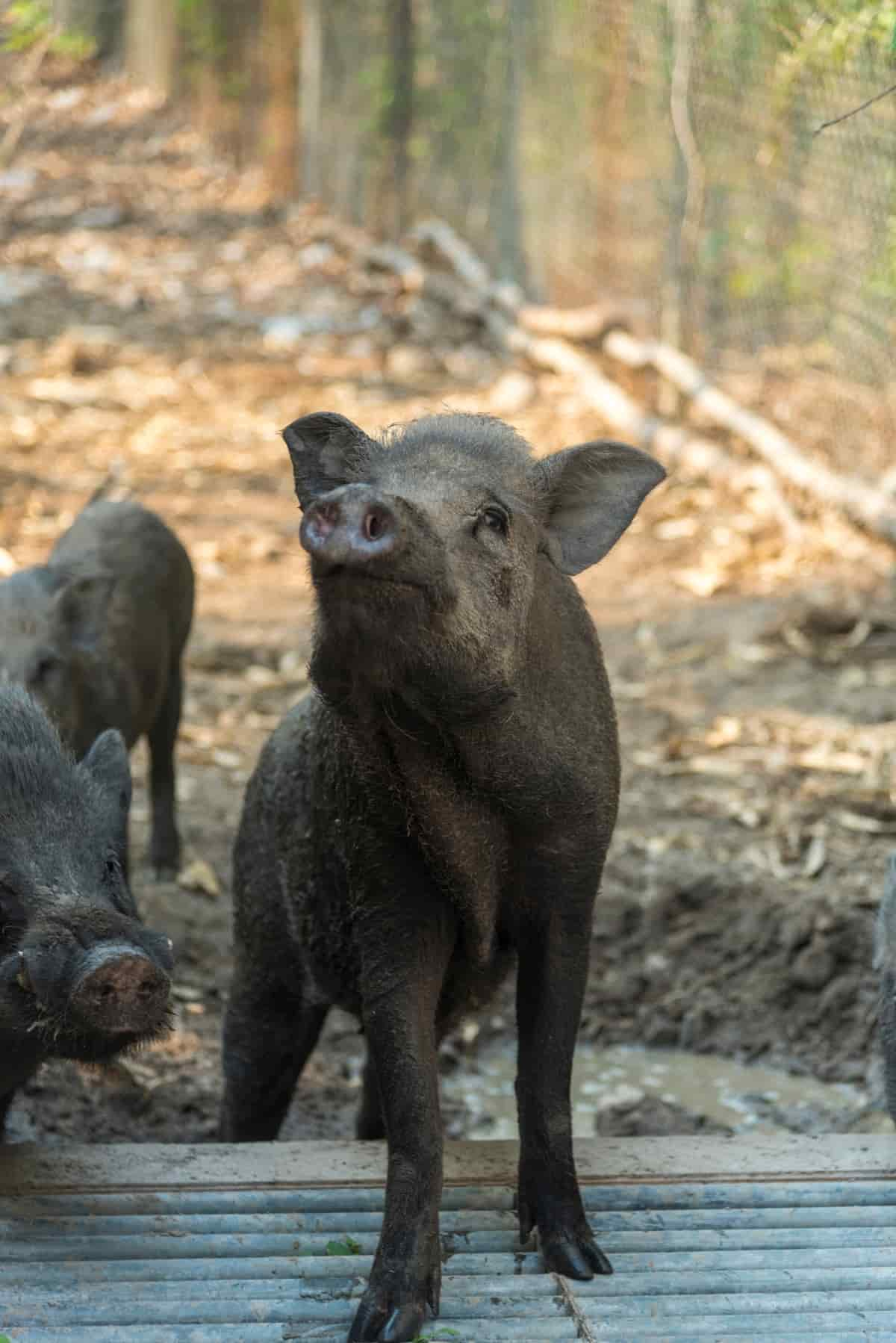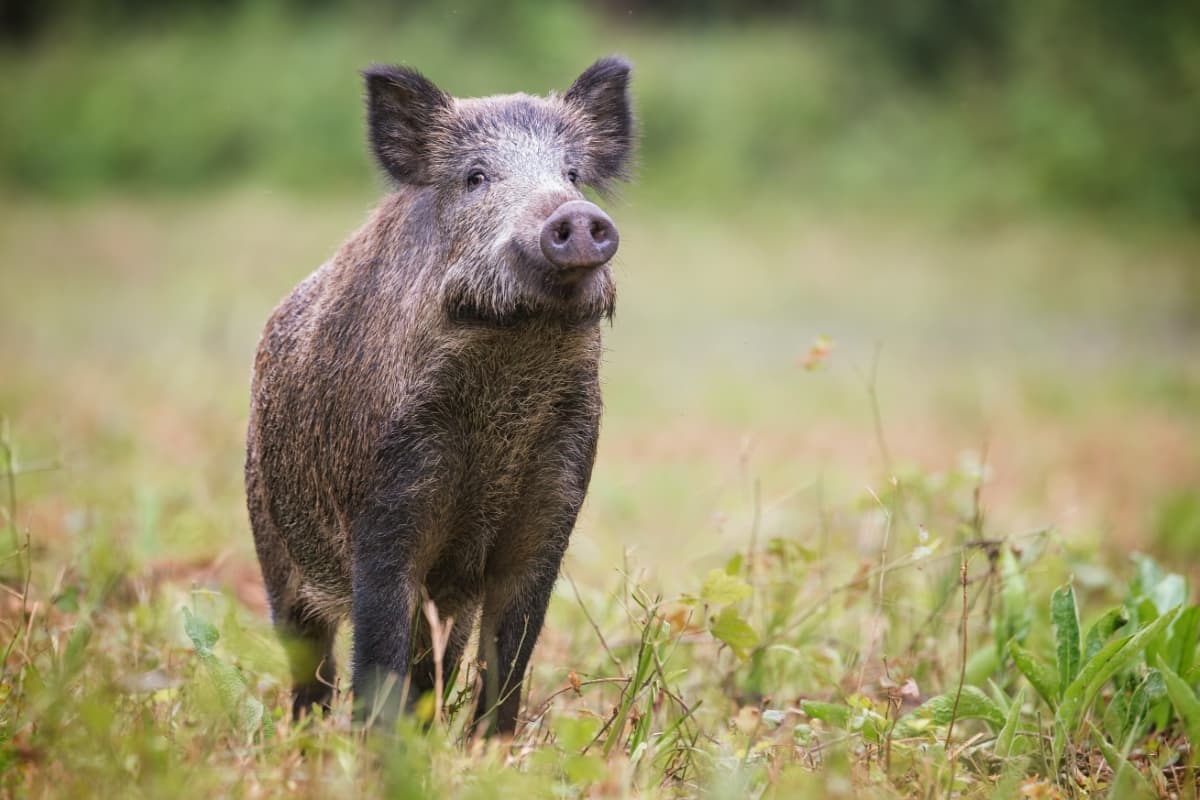Ossabaw Island Hogs are a unique heritage breed of pigs from Ossabaw Island, Georgia, and are known for their resilience and adaptability. These hogs play a crucial role in Ossabaw Hog conservation and sustainable pork production, with a rich history contributing to their current status among rare pig breeds.

Raising Ossabaw Hogs requires understanding their natural behaviors, dietary needs, and healthcare essentials. Ossabaw Island pig farming emphasizes sustainable farming practices, focusing on preserving the genetic integrity of this breed while maintaining their distinctive Ossabaw pig characteristics. The breed’s size, weight, and diet are tailored to their environment, making them a fascinating subject for those interested in sustainable agriculture and preserving rare breeds.
Introduction to Ossabaw Island Hog
The history of Ossabaw Hogs traces back to Spanish explorers who brought them to Ossabaw Island in the 16th century, where they have lived in a semi-feral state since then. This isolation has contributed to the Ossabaw Island Hog’s unique genetic makeup, making them a significant subject of Ossabaw Island Hog preservation efforts. Their long history on the island has imbued them with distinct traits that distinguish them from other breeds, underpinning their importance in conservation and sustainable farming with Ossabaw pigs.
Ossabaw pig characteristics include their small size, efficient metabolism, and hardy nature, which make them well-suited to the fluctuating conditions of their natural habitat. These traits have been honed over centuries, contributing to the breed’s ability to thrive in diverse environments, making them a key species in Ossabaw Hog conservation initiatives and sustainable pork production.
The lifespan of Ossabaw Island Hogs is typically around 15 to 20 years, a testament to their robust health and resilience. This longevity is particularly noteworthy given the breed’s feral origins and the challenging conditions of their native habitat, highlighting the importance of proper care and management in maintaining their health and well-being.
The price of Ossabaw Island Hogs can vary widely, ranging from $100 to $500, depending on factors such as age, pedigree, and suitability for breeding or meat production. This price range reflects the breed’s rarity and the demand among farmers and conservationists looking to contribute to these heritage pigs’ preservation and sustainable farming.
Physical Description
Ossabaw Island Hogs are smaller than many commercial breeds, with adults typically weighing between 100 to 200 pounds. Their compact size and weight are adaptations to their island environment, where resources can be scarce, and these characteristics contribute to their efficiency and sustainability in both wild and domesticated settings.
The coat of Ossabaw Island Hogs varies from solid black to spotted or ginger, with a coarse, bristly texture that protects from the elements. These color patterns and the texture of their coat are not only distinctive aesthetic traits but also serve practical purposes, helping these hogs to manage temperature and repel pests in their natural habitat.
Habitat and Lifestyle
The natural habitat of Ossabaw Island Hogs is the dense forests and marshes of Ossabaw Island, where they have adapted to a life of foraging for a diverse range of foods. This environment has shaped their behaviors and physical traits, making them a unique study in adaptation and survival in the wild.
Ossabaw Island Hogs have developed remarkable adaptations to their environmental conditions, including a high tolerance for heat and humidity and an ability to forage for various food sources. These adaptations make them particularly suited to life in challenging environments and underscore their value in genetic resilience and conservation studies.
Diet and Nutrition
Ossabaw Island Hogs exhibit natural foraging behavior, including a diet of roots, tubers, acorns, and vegetation in their habitat. This foraging ability is key to their survival and health in the wild, allowing them to thrive in various conditions with minimal human intervention.
For domesticated Ossabaw Hogs, a recommended diet mimics their natural foraging habits as closely as possible, incorporating a variety of vegetables, fruits, and grains to provide a balanced intake of nutrients. This diet supports their health and well-being in a farm setting, promoting sustainable pork production while maintaining the breed’s distinctive qualities.
Health and Veterinary Care
While Ossabaw Island Hogs are generally robust, they can face health issues common to swine, such as parasitic infections and respiratory problems. Awareness and early detection of these issues are crucial for effective management and treatment, ensuring the health and longevity of these unique animals.
Preventative care and vaccinations play a vital role in maintaining the health of Ossabaw Hogs, including regular deworming, vaccination against common swine diseases, and routine health checks. These measures are essential for Ossabaw Hog health care, preventing disease and promoting overall well-being.
In case you missed it: Cheap Pig Fencing Ideas: DIY Fencing Solutions for Beginners

Breeding Practices
Breeding Ossabaw pigs focusing on genetic preservation is crucial to maintaining the breed’s unique traits and diversity. This involves careful selection of breeding pairs to ensure the continuation of the breed’s distinctive characteristics and to prevent genetic bottlenecks that can compromise health and vitality.
In addition to genetic preservation, breeding practices for Ossabaw Hogs also prioritize health and temperament, ensuring that offspring are genetically diverse and well-suited to life in both wild and domesticated environments. This approach supports the breed’s long-term viability and contributes to the sustainability of Ossabaw pig farming.
Conservation Status
Efforts to preserve the Ossabaw Island Hog include conservation programs, sustainable farming initiatives, and educational outreach to raise awareness of the breed’s importance. These endeavors strive to secure the continued existence and success of Ossabaw Hogs, emphasizing their importance in preserving biodiversity and promoting sustainable farming practices, both in their natural environment and captivity.
The Ossabaw Island Hog faces challenges, including habitat loss, genetic dilution, and the pressures of commercial farming practices. Meeting these challenges necessitates collaborative action among conservationists, farmers, and the broader community to safeguard the breed’s existence and advance sustainable practices that enhance the well-being of the pigs and their ecosystems.
Raising Ossabaw Island Hogs
Housing for Ossabaw Island Hogs should provide shelter from extreme weather, adequate space for exercise, and areas for natural foraging behaviors. This environment mimics their natural habitat as closely as possible, supporting their health and well-being in a domesticated setting.
Daily care and management of Ossabaw Hogs involve regular feeding based on their dietary needs, maintaining clean and safe living conditions, and monitoring for any signs of health issues. This care ensures that the hogs remain healthy and content, contributing to their welfare and the success of Ossabaw Island pig farming.
Ossabaw Island Hogs in Agriculture
Sustainable farming practices with Ossabaw Hogs include rotational grazing, organic farming methods, and a focus on ecological balance. These practices not only support the health and productivity of the hogs but also contribute to the health of the land, promoting a sustainable and environmentally friendly approach to agriculture.
Ossabaw Island Hog meat is prized for its flavor and quality, with higher fat content and marbling that contribute to its culinary appeal. This meat is a key component of sustainable pork production, offering a delicious and ethical alternative to commercial pork products and showcasing the benefits of heritage breed farming.
In case you missed it: Ultimate Guide to Vietnamese Potbelly Pig: Breeding, Raising, Diet, and Care

Conclusion
Raising Ossabaw Island Hogs offers a unique opportunity to engage with sustainable agriculture by preserving a heritage breed that contributes richly to biodiversity and sustainable pork production. These hogs’ distinct characteristics and adaptive traits, combined with their natural foraging behavior and diet, underline the importance of tailored care and management practices.
Note: The images presented in this post are intended solely for representation purposes. The images are meant to serve as visual aids and should not be relied upon as accurate representations of their real-life counterparts.
- Feed Your Flock for Less: Top 10 Tips to Save on Chicken Feed
- Ultimate Guide to Ossabaw Island Hog: Breeding, Raising, Diet, and Care
- Hatching Answers: The Top 10 Reasons Your Chickens Aren’t Laying Eggs
- Eggs and Economics: Breaking Down the Cost of Raising Backyard Chickens
- Defend Your Greens: Proven Methods to Keep Iguanas Out of Your Garden
- Ultimate Guide to Cinnamon Queen Chicken: A Comprehensive Guide for Beginners
- Ultimate Guide to California Tan Chicken: Breeding, Raising, Diet, Egg-Production and Care
- Ultimate Guide to Marsh Daisy Chicken: Breeding, Raising, Diet, and Care
- 10 Types of Chicken Farming Businesses You Can Start for Profits